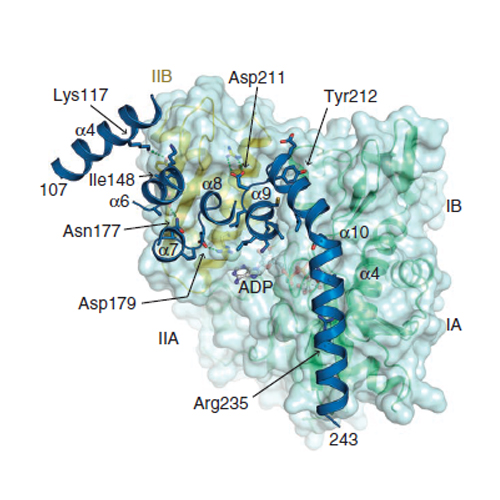Structure and function of Hip, an attenuator of the Hsp70 chaperone cycle
30-Jun-2013
Nature Structural & Molecular Biology, 2013, doi:10.1038/nsmb.2608, 20, 929–935 published on 30.06.2013
Nature Structural & Molecular Biology, online article
Nature Structural & Molecular Biology, online article
The Hsp70-interacting protein, Hip, cooperates with the chaperone Hsp70 in protein folding and prevention of aggregation. Hsp70 interacts with non-native protein substrates in an ATP-dependent reaction cycle regulated by J-domain proteins and nucleotide exchange factors (NEFs). Hip is thought to delay substrate release by slowing ADP dissociation from Hsp70. Here we present crystal structures of the dimerization domain and the tetratricopeptide repeat (TPR) domain of rat Hip. As shown in a cocrystal structure, the TPR core of Hip interacts with the Hsp70 ATPase domain through an extensive interface, to form a bracket that locks ADP in the binding cleft. Hip and NEF binding to Hsp70 are mutually exclusive, and thus Hip attenuates active cycling of Hsp70–substrate complexes. This mechanism explains how Hip enhances aggregation prevention by Hsp70 and facilitates transfer of specific proteins to downstream chaperones or the proteasome.











